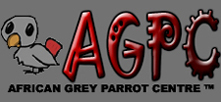The African grey parrot is one of the most popular pet parrots available. Many people get the name of the parrot wrong and in fact spell African grey parrot as ‘African gray parrot’. This is indeed wrong but if you made a mistake then don’t worry about it! This article will endeavor to explain everything there is to know about the African grey parrot or the African gray parrot!
All The Facts About The African Grey Parrot: What Do They Look Like?
As you would have probably guessed already, the African grey parrot is mostly grey all over with a shade of grey around the facial region. Their beaks are generally black and they have a tinge of red underlying beneath their tails that help them to stand out from many other grey parrots. They come from the Congo region in Africa and are constantly hunters by traffickers due to the fact that they can sell for quite a lot of money in Western parts of the world.
Efforts are being made to stop this from occurring and in recent history there seems to be a reduction in the number of birds being trafficked overseas. This has also sparked a revival in their overall numbers in the wild which means things are starting to look up for the African grey.
All The Facts About The African Grey Parrot: What Are They Like To Train?
African grey parrots are one of the most brilliant breeds on Earth and are said to be one of the best speakers out of all the parrots. They have the ability to put together whole phrases and can actually learn quite fast. This is one of the major reasons why so many parrot owners choose to own African grays.
All The Facts About The African Grey Parrot: Is There Anything I Should Know Before I decide To Buy An African Grey Parrot?
Yes actually there is a lot you need to learn before you going out and buy your own. First of all you have to make sure you know where you are getting your parrot from as many of them are trafficked into the country as was discussed previously in the article. Secondly if you have no experience whatsoever in parrot handling, I would recommend starting off with a bird that is much easier to handle such as a budgie for example.
Lastly African grey parrots are animals that thrive on enthusiasm and attention. If you know you aren’t going to be able to spend enough time looking after and training your parrot then do the right thing and let someone who does have a go. There are too many people out there abusing the privilege of owning such magnificent creatures just so they can tell their friends that they own a parrot. I’m not trying to put you off buying one, all I’m saying is that you need to sum up your life and make sure there is room for an African grey parrot in it and if there is, I hope you enjoy many years of great success and happiness with your parrot!
About the Author
By: Dane Stanton of www.parrottrainingreview.com

